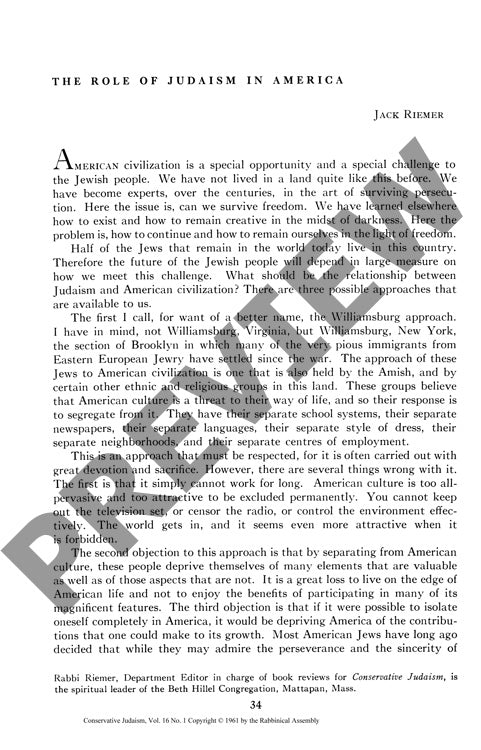The Role of Judaism in America
Couldn't load pickup availability
Judaism and American civilization, often viewed as naturally compatible traditions, actually emerge from radically different historical experiences that have shaped contrasting worldviews. While American character developed through shortage of time, abundance of space, and material success, Jewish character was forged by precisely opposite conditions: abundance of time, shortage of space, and historical adversity. Through historical analysis and cultural comparison, three distinct paths emerge for Jews in America: complete separation (the "Williamsburg approach"), total assimilation (the "two hundred percent American" model), and a third way emphasizing creative interchange between Jewish and American traditions. American culture's emphasis on innovation, technological advancement, and optimism derived from continuous success stands in marked contrast to Jewish culture's focus on tradition, spiritual development, and realistic understanding of human limitations gained through centuries of persecution. Rather than representing a "merger of twins," the Jewish-American relationship functions as a "marriage of opposites" where each tradition contributes unique strengths: Jewish emphasis on time's sanctity, spiritual values, and realistic assessment of human nature can complement American innovation and practical achievement. This framework illuminates how minority religious traditions can maintain their distinctiveness while contributing meaningfully to American pluralistic society.

More Information
-
Physical Description
-
Publication Information
Published 1961
ISBN
-
Publication Credits
Jack Riemer

